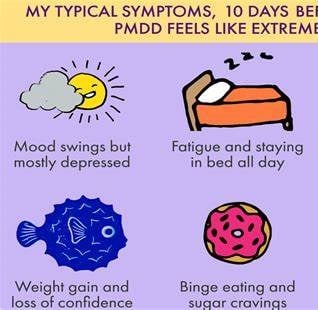Understanding PMDD: The Struggles Beyond PMS
4/7/20251 min read


What is PMDD?
Welcome to today’s episode, where we dive deep into a topic that affects many yet remains largely misunderstood: PMDD, or Premenstrual Dysphoric Disorder. While you might think of PMDD as an extreme version of PMS, the truth is that it manifests in ways that can significantly disrupt daily life.
Common Symptoms of PMDD
PMDD typically presents itself during the luteal phase of the menstrual cycle, surfacing roughly one to two weeks before your period and dissipating afterward. The symptoms are much more severe than typical PMS. They include intense mood fluctuations, heightened irritability, crippling fatigue, and even depression or suicidal thoughts. In addition to the emotional rollercoaster, there are also physical symptoms like bloating or joint pain that can make this time even tougher.
How is PMDD Different from PMS?
One of the most common assumptions is that PMDD is simply an exaggerated form of PMS. The reality, however, is that PMDD disrupts not just emotional well-being but also your work and everyday life. While PMS can include discomfort and mood changes, PMDD is characterized by a severity that often leaves those affected feeling overwhelmed. It’s important to recognize these differences, as they dictate not only the experience but potentially the treatment options available.
Interestingly enough, the exact cause of PMDD is still shrouded in mystery. It’s not merely due to hormonal changes, but rather how the brain reacts to these fluctuations. This makes understanding PMDD both complex and crucial for those who might be experiencing symptoms without knowing why.
For those suffering from PMDD, understanding the condition can be a vital part of managing it. It’s essential to communicate with healthcare professionals, as treatments and coping strategies can provide much-needed relief. So if you think you or someone you know might experience PMDD, remember: you're not alone, and there are ways to regain control.
